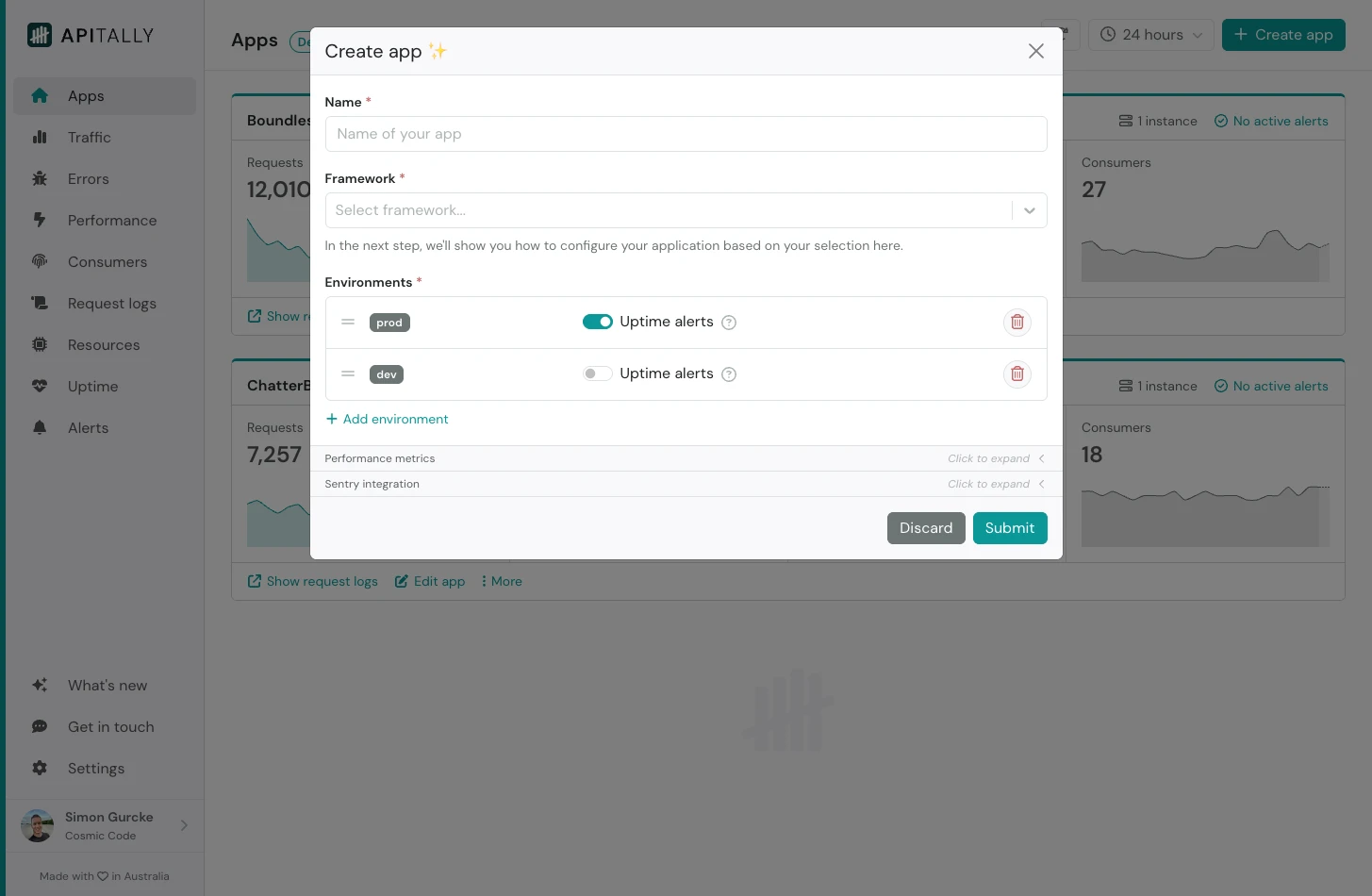- Get real-time metrics on API usage, errors, and performance
- Track API adoption and usage by individual consumers
- Log and inspect API requests and responses
- Capture application logs, correlated with API requests
- Monitor uptime and set up custom alerts
Create app
To get started, create a new app in the Apitally dashboard and select as your framework. Here you can also configure the environments (e.g.
Here you can also configure the environments (e.g. prod and dev) for your app, or simply accept the defaults.
Take a note of the client ID displayed after submitting. You will need it in the next step.
Enable Apitally
Add the Apitally SDK to your project’s dependencies.@UseApitally annotation to your Spring Boot application class.
Application.java
application.yml file and provide the client ID for your app.
You’ll find the client ID on the Setup instructions page in the Apitally dashboard, which is displayed immediately after creating the app.
application.yml
At this point the basic setup for your application is complete and you will start seeing data in the Apitally dashboard.
Identify consumers
To analyze and filter API traffic by consumers, you can associate requests with consumer identifiers in your application. In most cases, use the authenticated identity to identify the consumer. The identifier should be a string, such as a username, email address, or any other unique identifier. Optionally, you can also provide a display name and group for each consumer. To associate requests with consumers, set theapitallyConsumer attribute on the request. You could do this in a filter or interceptor, for example.
The Consumers dashboard now shows all consumers that have made requests to your application. You can also filter other dashboards by consumer.
Configure request logging
Logging of individual requests and responses is disabled by default to protect potentially sensitive data. If you enable it, you can configure in detail what parts of the request and response should be logged. You can also mask sensitive information (e.g. in headers) and exclude certain requests from logging. The SDK applies default masking rules for common sensitive headers, query parameters and request/response body fields. Check out the SDK reference to learn more about the request logging configuration options.The Request logs dashboard now shows individual requests handled by your application. You can filter, search, and inspect them in detail.

